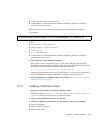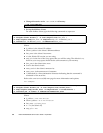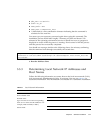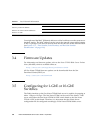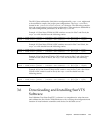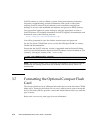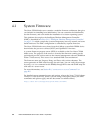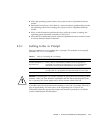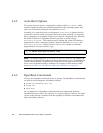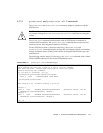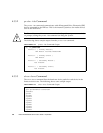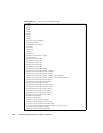
Chapter 4 Firmware and Blade Server Management 4-3
4.2 Power-On Self-Test Diagnostics
Power-on self-test (POST) is a firmware program that helps determine whether a
portion of the system has failed. POST verifies the core functionality of the system,
including the CPU modules, motherboard, memory, and some on-board I/O devices.
The software then generates messages that can be useful in determining the nature
of a hardware failure. POST can run even if the system is unable to boot.
If POST detects a faulty component, it is disabled automatically, preventing faulty
hardware from potentially harming any software. If the system is capable of running
without the disabled component, the system boots when POST is complete. For
example, if one of the processor cores is deemed faulty by POST, the core is disabled,
and the system boots and runs using the remaining cores.
POST diagnostic and error message reports are displayed on a console.
4.2.1 POST Test Coverage
The POST diagnostics include the following tests:
CPU Basic Test
CPU Functional Test
CPU D-Cache RAM
CPU D-Cache Tags
CPU I-Cache RAM Test
CPU I-Cache Tag RAM
CPU L2 Cache UA Array Test
CPU L2 Cache UA Array Test
CPU Interrupt Handler
CPU IMMU Memory Management Unit
CPU DMMU Memory Management Unit
FPU (Data movement and functionality)
I/O Controller register access
I/O Controller PCI configuration access
Block Memory Test
Network Interfaces (register access and basic funtionality)
Modular Arithemetic Memory parity errors Test
SPU (Security Processing Unit) Tests



